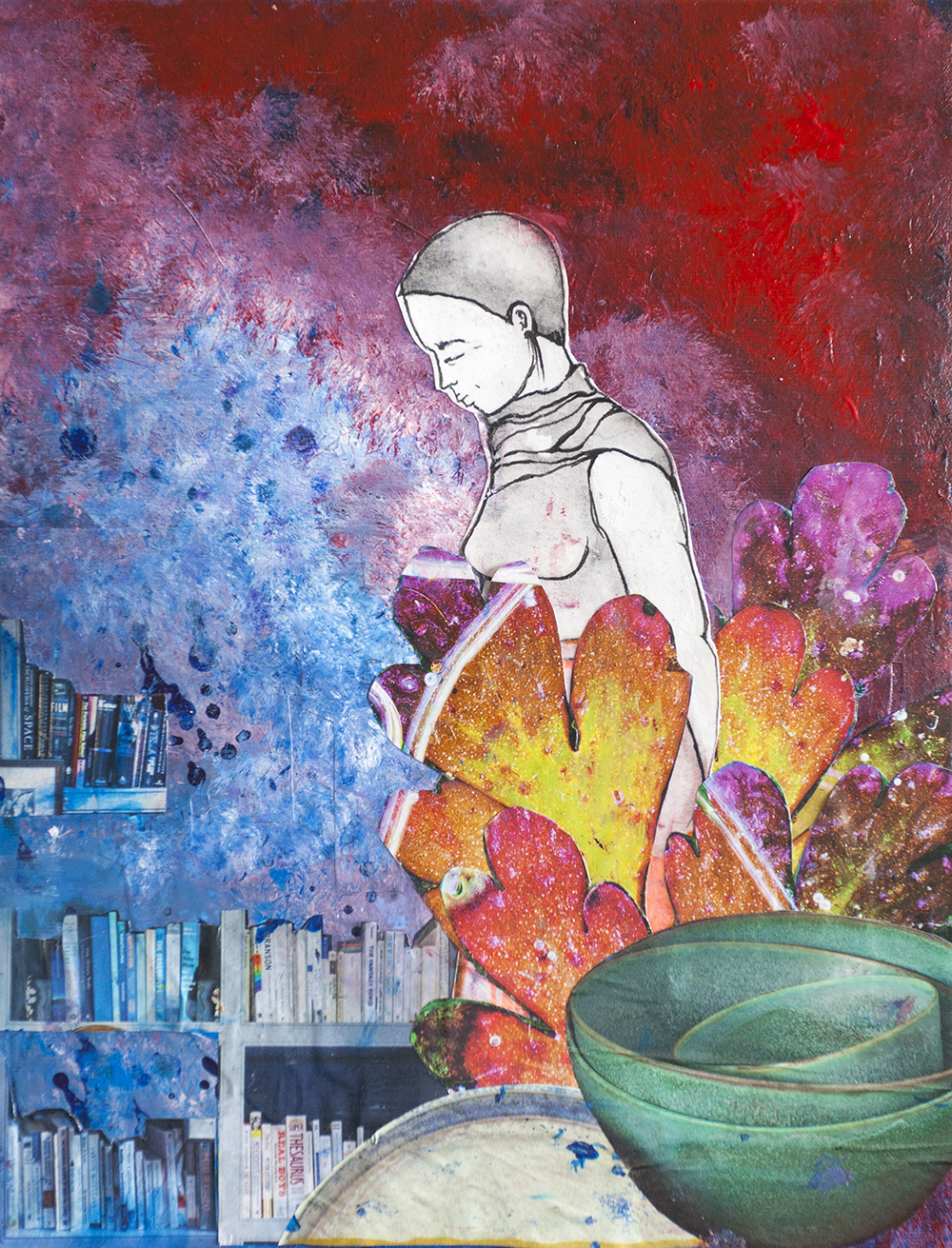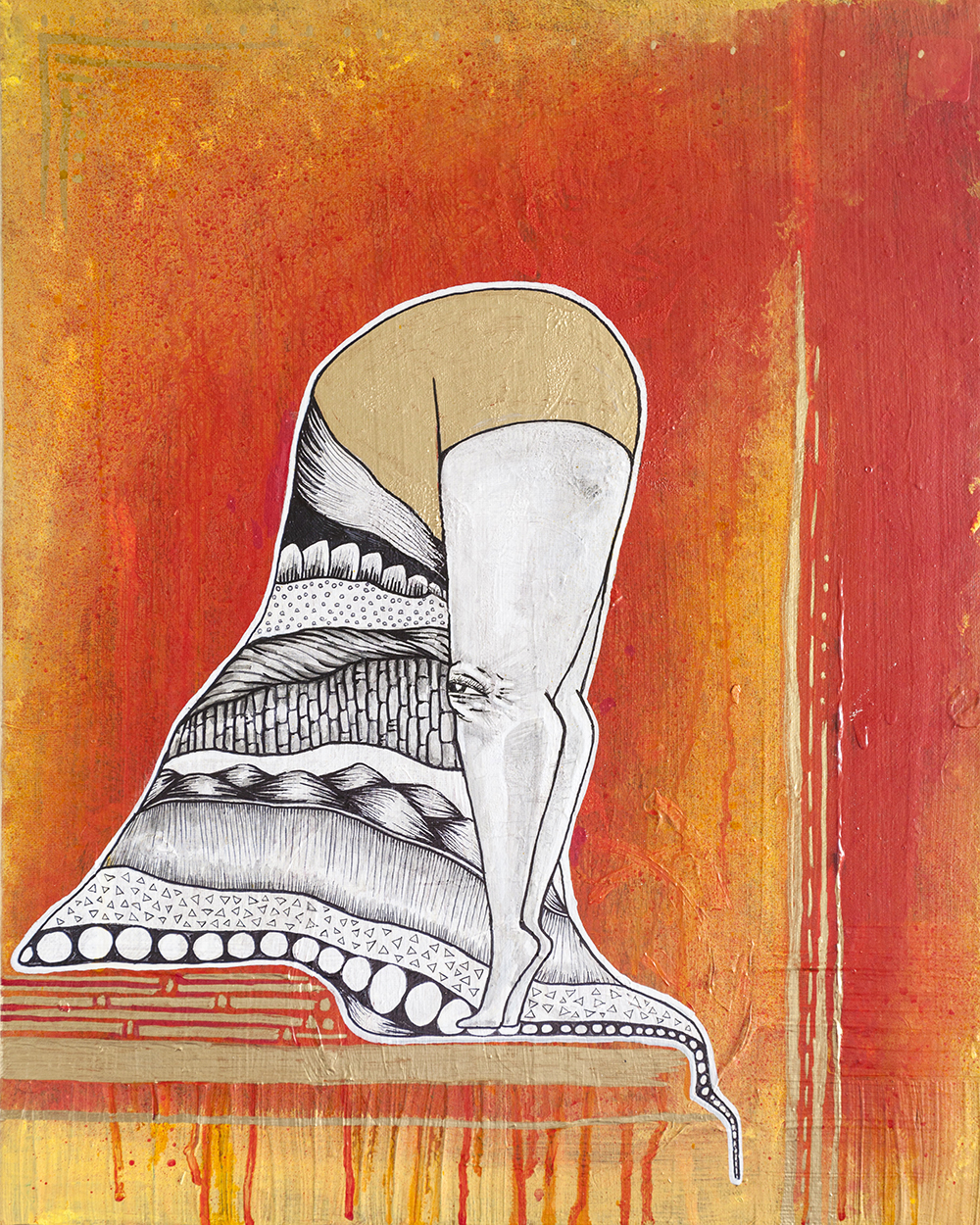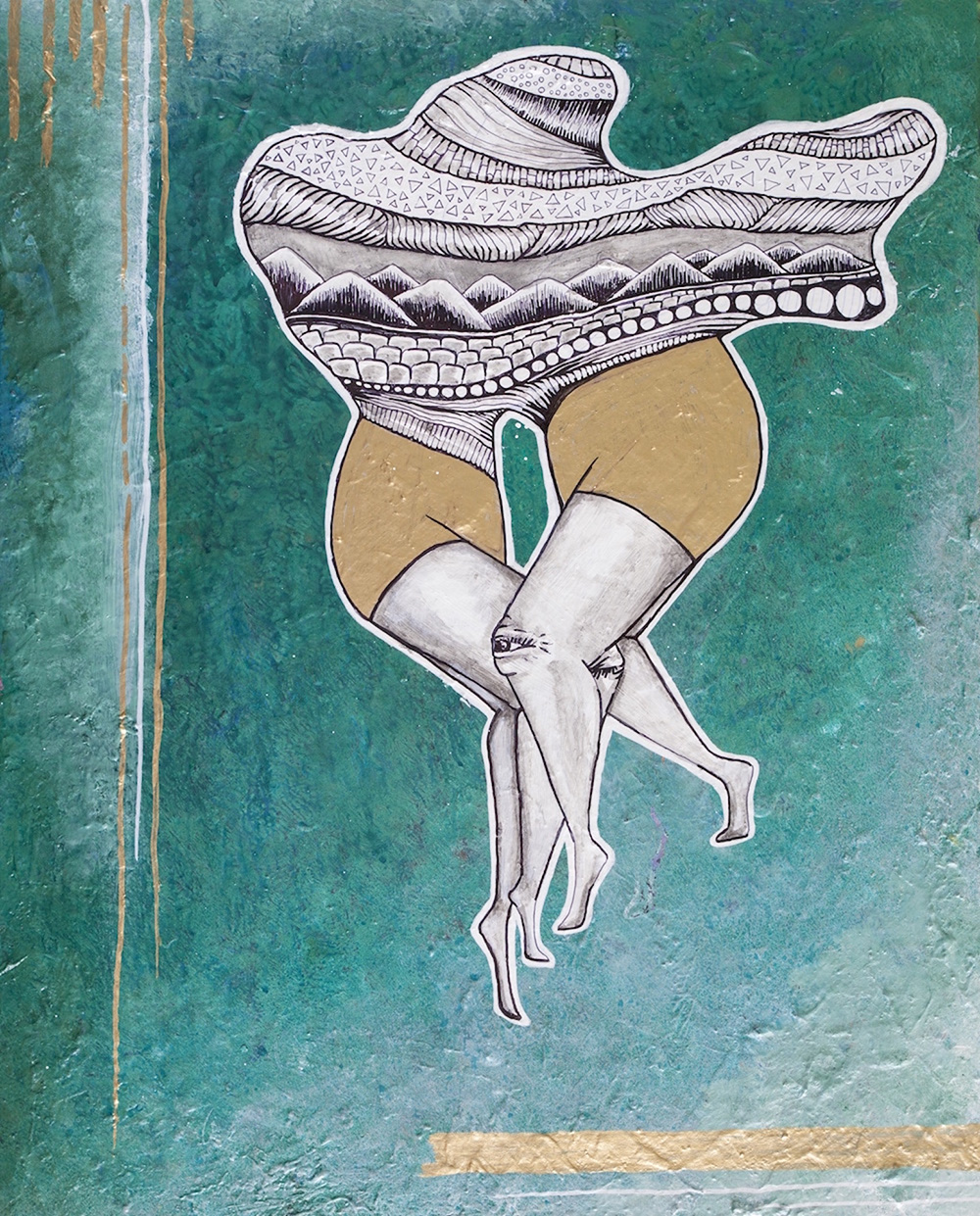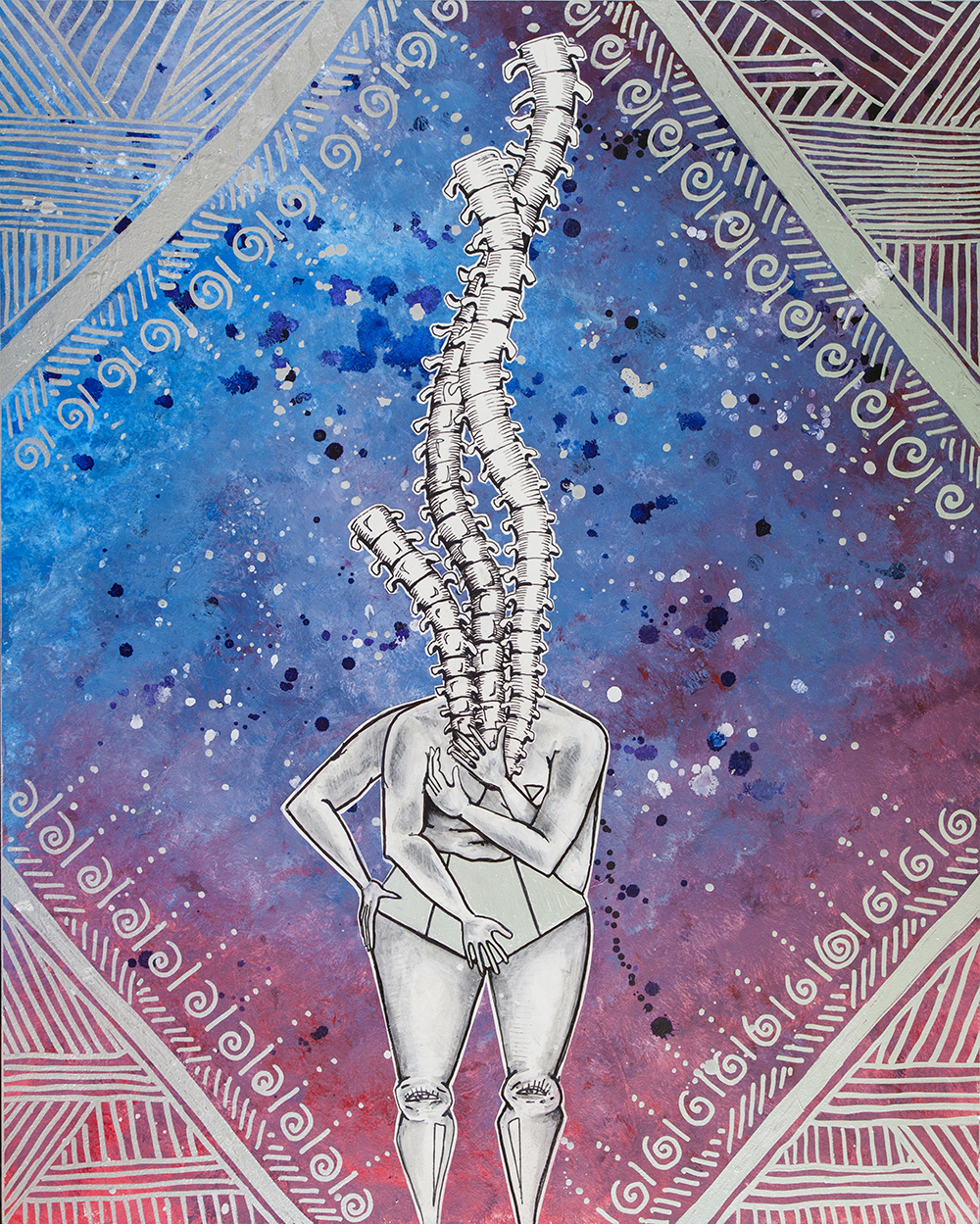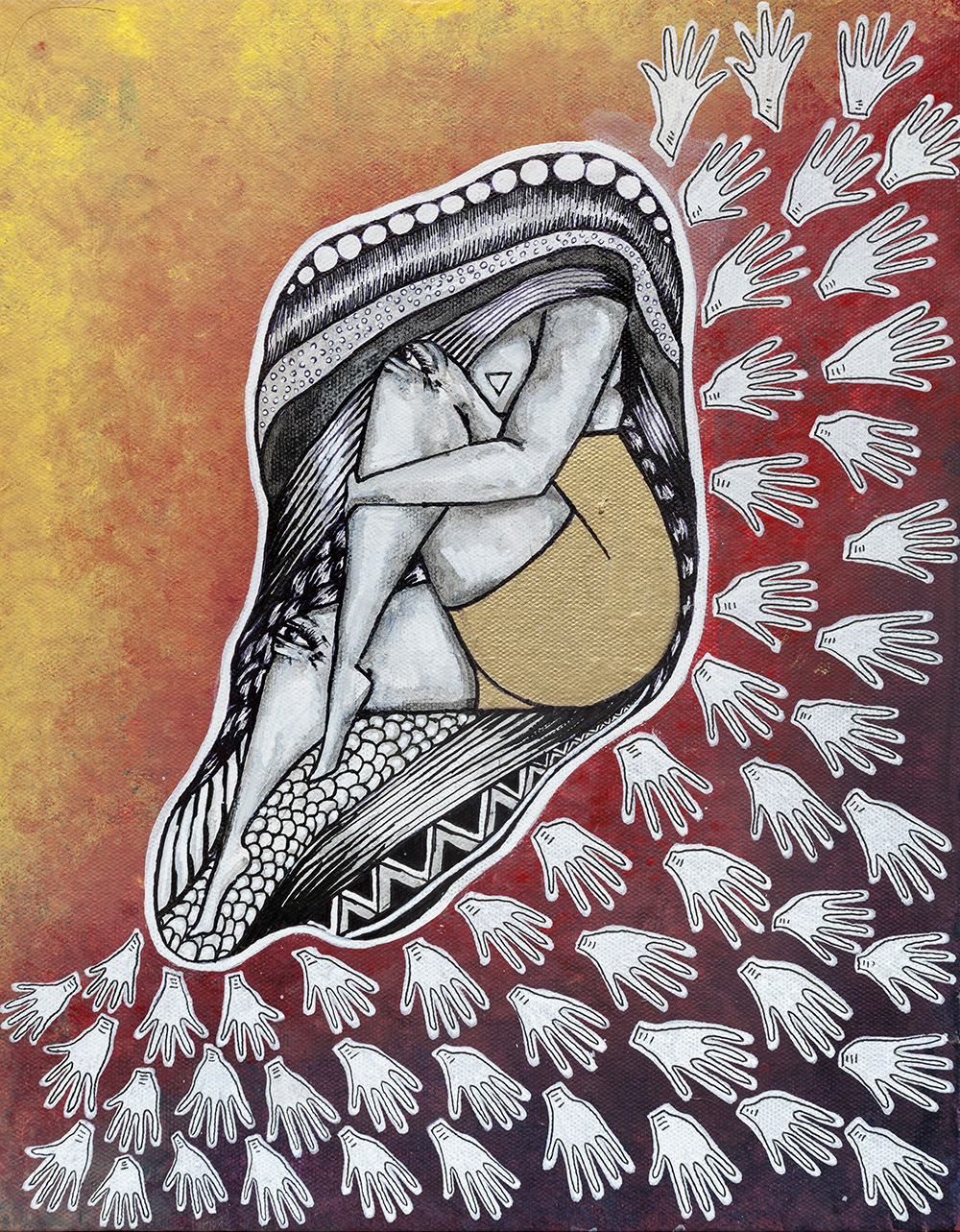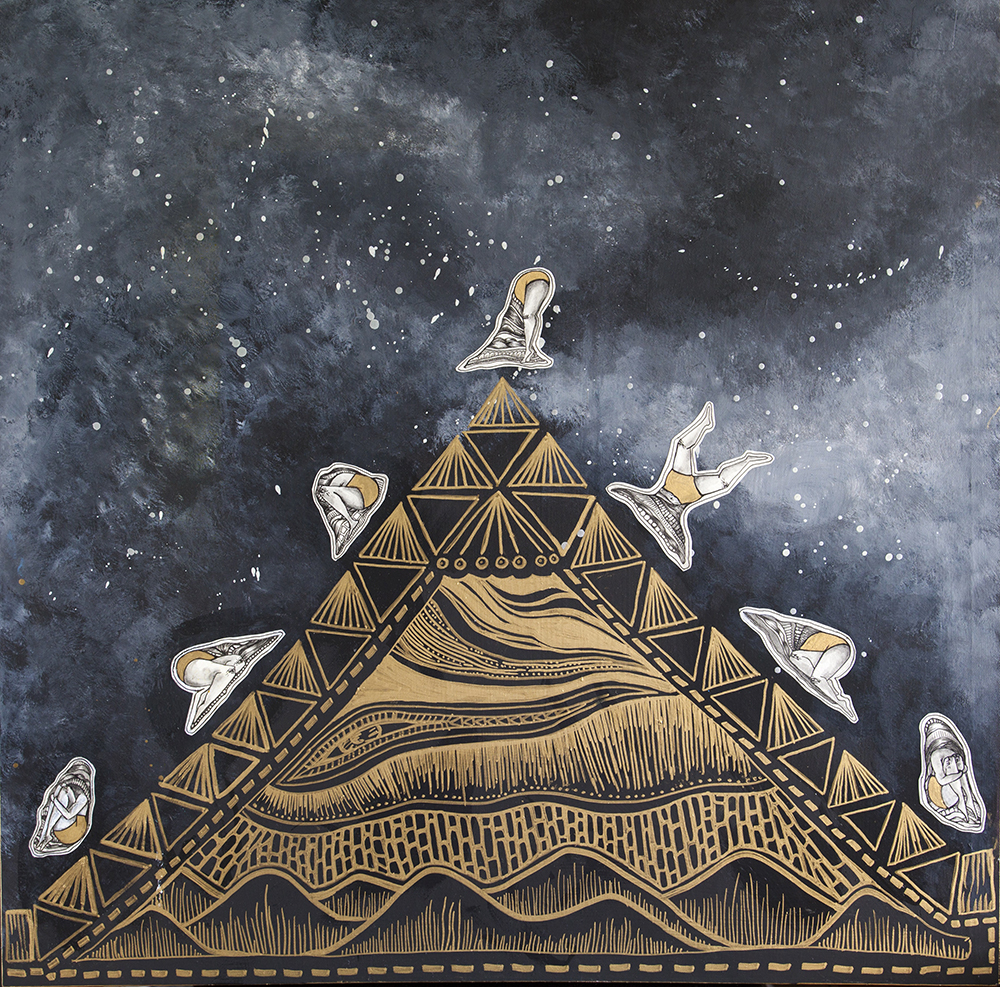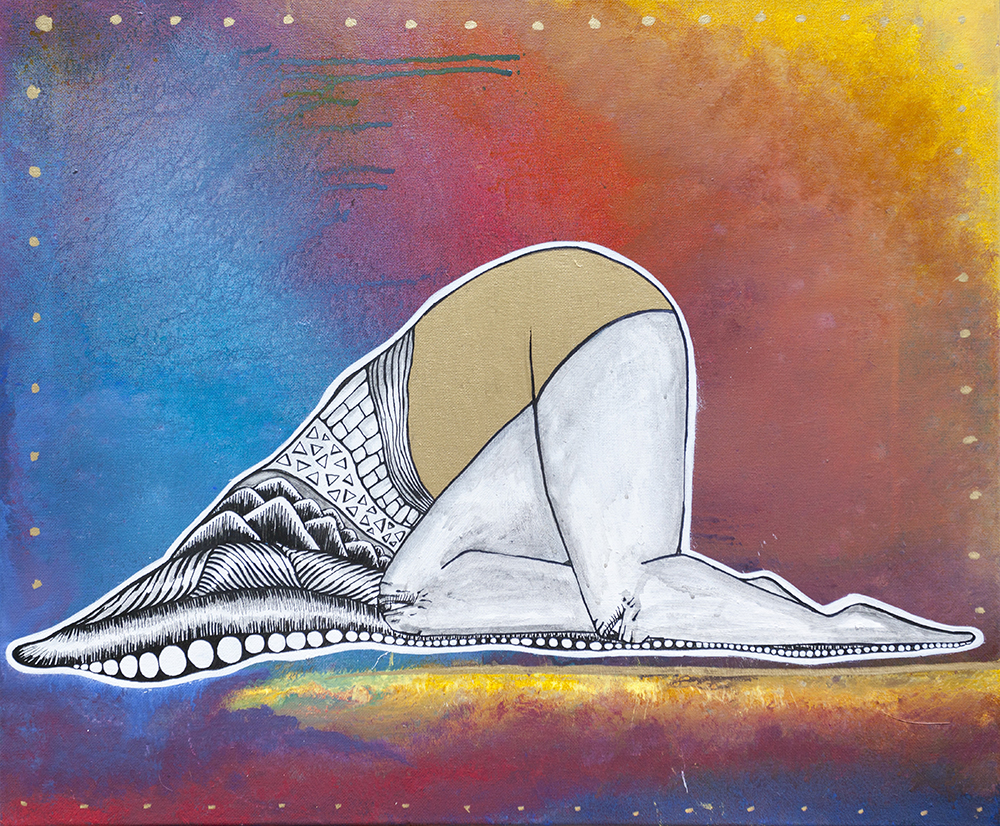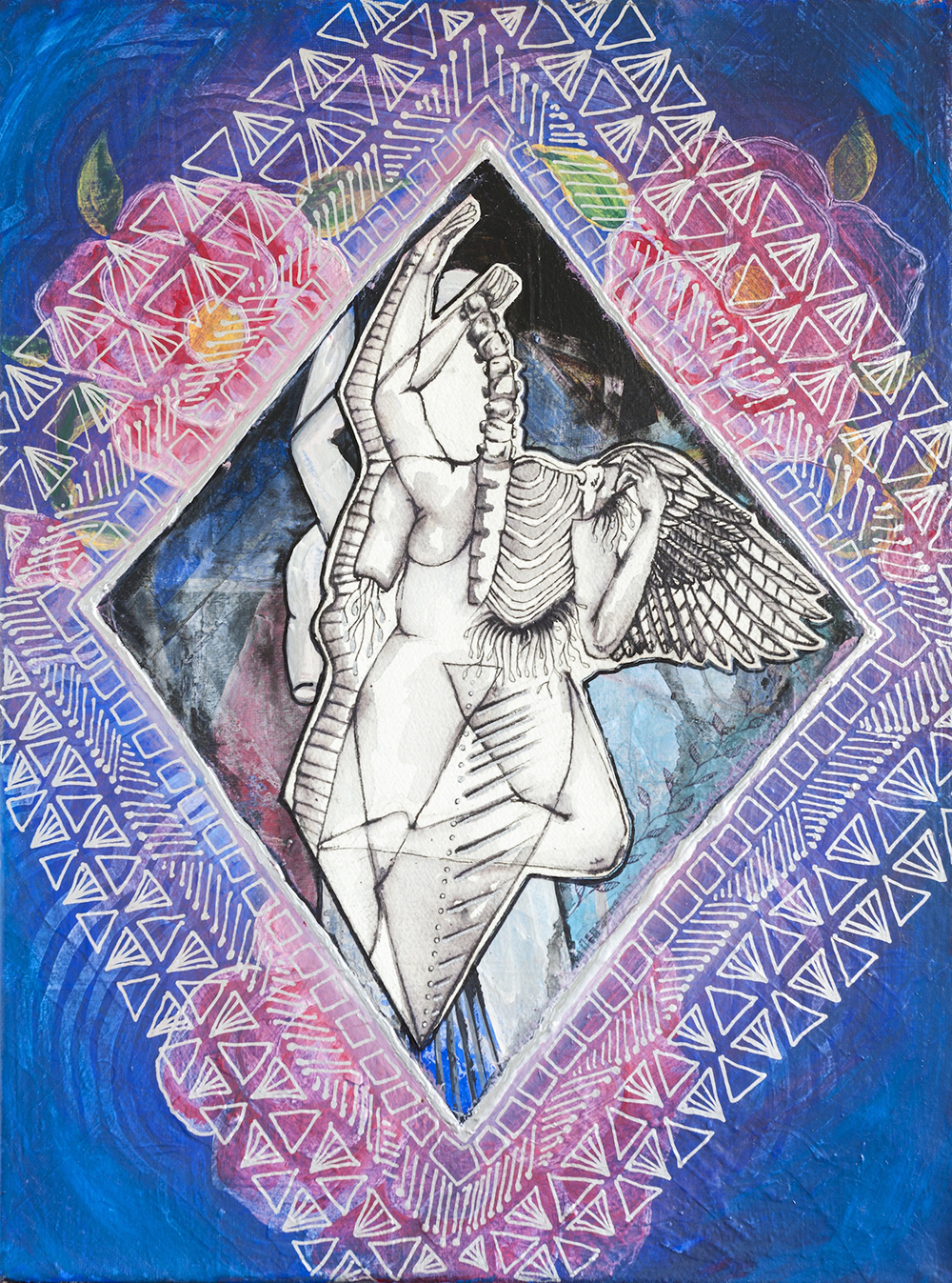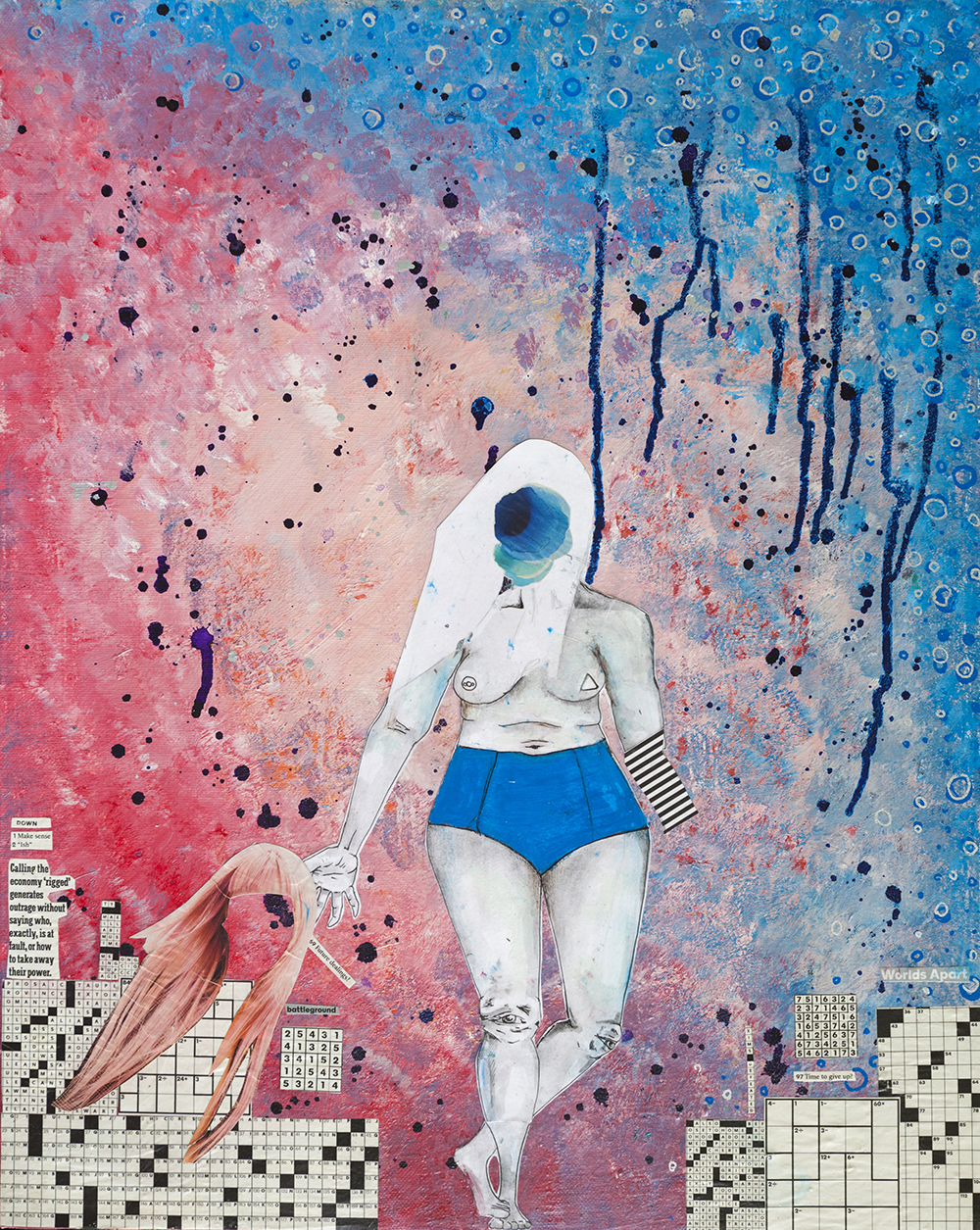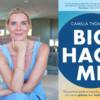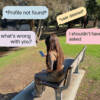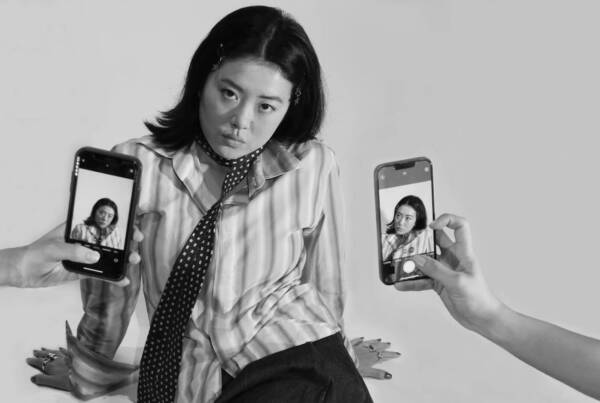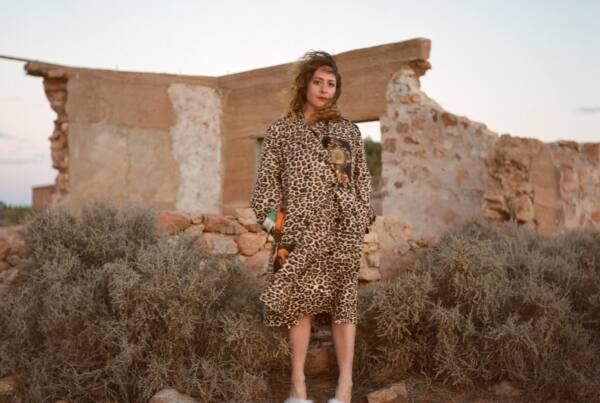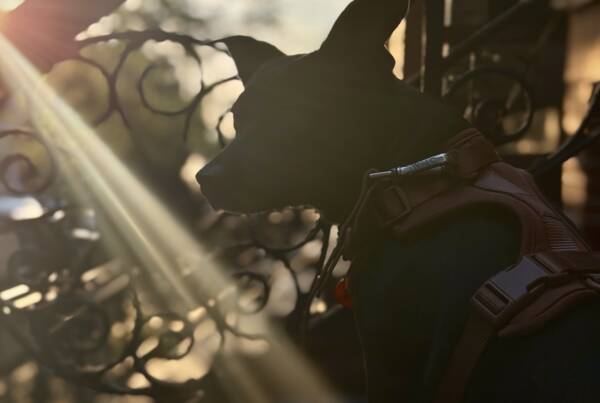Interview of Alyssa Anne by Sophie Pellegrini // My creative process ebbs and flows like most things in life and I get into intense modes of creation.
Tell us a little about yourself!
I’m 28 years old and live in Seattle, WA. I am originally from Cleveland, Ohio, which will always hold a special place in my heart. I’m an artist and social worker, a dreamer and lover of space. I’m white and queer and most days I feel pretty femme. I work in a community non-profit as a young parent advocate where I spend my days supporting young people with kids, helping them finish high school and navigating the oppressive systems at play. I’m quirky and weird and love exploring contradictions in the world. I am passionate about social justice and am always working to expand my views, challenge my complacency, and be involved in movements for change. I only recently started putting my art out into the world – it previously lived comfortably in my journals. It has been a learning experience starting a mini art business and putting my art in shows. This is the beginning of it for me, and I think a lot about what it means to be an artist and what to do with the space and platform artists are given.
How did you get started in the arts? What mediums do you work in, and do you have a favorite?
I started drawing in high school. I was the kid with sharpie all up and down my arms and doodling anywhere I could find. In college I discovered the power of journaling; my art lived and grew inside of journals and notebooks that never left my side. It became a crucial way that I learned how to process my feelings and the world around me. For years I wanted to transfer what I made in books on small pages into something larger. It wasn’t until this past year when I found my stride working on canvas and on a larger scale. It took me awhile to figure out how to paint the detail I was able to create with pen and paper, so I started painting backgrounds on canvas then pasting my detailed drawings on top. Later I discovered acrylic paint pens, and now I paint white backgrounds onto the canvas and draw over them in India ink pen or sharpie or whichever of my pens still have ink left. I don’t spend much on art supplies – I work with what I have, buy my canvases at Goodwill, and use lots of random paints that I have collected over the years. I have been playing around with some gold-leaf-esque paint pens too, which is fun.
Tell us a little about your artistic work process.
I love talking about the artistic process because it has taken me years of drawing to get to a point where I have some art I am willing to share and put out into the world. My creative process ebbs and flows like most things in life and I get into intense modes of creation. During those times, I find it hard to think of much else besides the images I want to transfer from my mind onto canvas. For a while, I was stuck on wanting them to look exactly like they look in my head but I have learned to give myself up to the creative force inside of me and let it exist within me. I want to have a two-way street with my art where I mold it as much as it molds me, because it is such a powerful force. I sketch in my journal now rough outlines of ideas I have, take long walks to write down inspirations, and try to formulate my ideas before I put them onto a canvas. I have a ton of drawings that I cut out and intend to put somewhere bigger that never make it. I usually spend a few days painting backgrounds and then get into the smaller more tedious work of detailed patterns and subjects This provides balance for me because they both provide a different purpose in the emotional and healing process.
How would you describe your artistic aesthetic?
My art is inspired by space and dreams, so the backgrounds are all celestial and colorful. I want to escape the bounds of flesh and city walls and allow my subjects to walk or float in the beautiful space of the dream world and amongst the stars. My drawings are a mix of surrealist and realist self-portraits. Well, at least for the most part they are me, since that is the subject I know best (as Frida Kahlo says); my subjects are always evolving, and I see them as beings outside of myself as well. When I think of aesthetics, I think of how we define beauty as a society and I’ve been told my drawings can be a little unsettling based on the incomplete and distorted nature of the bodies. There is a lot of pain and anxiety wrapped up in my art, so I like to contrast the typical notion of beauty found in the bright colors with the twisted and dark parts I release when I paint and draw.


What inspires you?
My art is inspired by a large community of artists, some who I know personally, some who I know through social media and Instagram, and other artists I discover throughout my walk of life. I get ideas and inspiration through conversations I have, through the ways people interact with the world around them, and through my work as a social worker. I struggle with depression and anxiety and like to talk about it as a way to normalize struggles with mental health. A lot of my art is inspired by the way I feel when I’m in a fit of anxiety or when I am in a bout of depression. One of my recent series, in a slump, features a lot of bodies with patterned sacks instead of heads. This represents how I sometimes feel like my head is in the dirt, how I want to fold into the patterned lines, how I long to lose myself in shapes and repetition to clear my head.
My art is also inspired by the way that society tries to control and dictate how other people’s bodies should be. I often feel like my body is not enough or is not mine to decide what to do with, so in my paintings I take that back, distort myself, and put things where they “don’t belong.” I think a lot about the privilege I hold being a white cis woman and how people relate differently to society’s policing of people’s bodies based on their intersecting identities. I am continually trying to evolve my work to be able to hold more complex ideas and topics and to be accountable while expressing my pain. I am inspired by the continuation and evolution of my work and I hope to find my voice in speaking out more directly about white supremacy, patriarchy, and the destructive nature of our capitalist system. while still holding my intersecting identities and privilege.
Who are some of your favorite artists?
So many, I’ll try to pick just a few. My grandmother is one of my favorite artists and biggest inspirations. Growing up, I was fascinated with her studio in Brooklyn, New York and the portraits she would draw and paint. She sees the world through the eyes of an artist and her perspective on life and people has always been interesting to me.
I love a lot of the artists doing work through Culture Strike and Just Seeds Collective, such as Favianna Rodriguez and Jess X Snow. Along the same vein, “When We Fight We Win” features a lot of artists who are a part of those collectives and many others. It is a great book about the social movements and the art attached to them – I recommend it to everyone! I admire those artists’ ability to create commentary and powerful political art directly addressing issues and injustice in our world. I would love my work to evolve and speak out loudly around social justice, oppression, and the state of our world.
There is also a large community of emerging artists on Instagram I get inspiration from and love their work – some of whom include Heart over Crown, Molly Costello, and Laura Callaghan Illustrations. It’s a surprisingly wonderful outlet to meet other artists who are in a similar place as me as well as ones who have gotten a lot of recognition through the online community. Then of course I love some of the classics such as Frida Kahlo and Salvador Dali; many street artists such as Chip Thomas, Phlegm, Swoon and Senkoe; and some local Seattle artist inspirations such as Ari Glass (aka The Soufender) and Jazz Mom.
What’s your favorite thing about illustrating and making art?
What I love the most is that it is always changing and evolving. I have struggled to get out what I feel inside and while it is not always accurately transferred to canvas, it never ceases to surprise me and teach me something new about myself. Sometimes when I’m in the midst of depression, I don’t know always what to do with myself but art is always there to show me that I have something worthwhile inside. My anxiety also gives me a lot of nervous energy that I don’t always know how to handle, and painting is a therapeutic coping mechanism I can turn to. My other favorite thing is talking to artists and creating a community of creators in all the forms that creation comes in. There are endless projects, forms my art can take, and events that I can hold, which is an exciting prospect for collaboration and evolution. I dream of making my art into screens to print on fabric, zines, stickers, and larger pieces. I have even been playing around with the idea of making some of my subjects into performance art. I want to work on participating in community-focused events and to use some of my proceeds in the future to benefit small grassroots social change movements once I get my feet on the ground. The endless options and inspiring movements that art is associated with keeps me from feeling stagnant and always provides me with life.
What is the best piece of advice you’ve received?
I have received a lot. I have never taken a formal art class – at least not since middle school, but I have received so much support and insight from my community and family. What always runs through my brain was when in high school, doodles covering my notes and body, my brother told me to make something out of it. “Make it into something,” he said. Such simple advice yet it stuck with me and has encouraged me over the years to keep art as something that serves as a way to process my emotions and cope with hard feelings yet also to put some thought into crafting my images – to make them something.
In terms of artistic process, I read something recently (I wish I could remember who wrote it) about letting the art mold me and take on a form of its own as much as I mold my work. This has helped because creation and healing are not linear processes. While I can sit down and draw what I see, I can’t always sit down and create something meaningful that really says what I want it to even when I need it most. To let my creations flow, have no timeline, and have no desired outcome is a good reminder to keep my work authentic and real.
The last one is regarding selling my work, which is really new to me and is a scary idea. I’ve avoided it for years and now am finally hoping to make some money from my art, which is a huge shift for me. My uncle, also an artist, told me to “be courageous and cut it loose” in regards to selling originals. I am attached to my originals because they hold so much of me but also because I feel insecure as an artist asking a couple hundred dollars for a painting I’ve made. I value the artist’s role in the world and believe people should be paid for their work, yet it can be a hard thing to ask for. So this advice has spearheaded my endeavor in starting to sell my work – to be fearless, learn from my mistakes, and not give up in putting my work out there.



